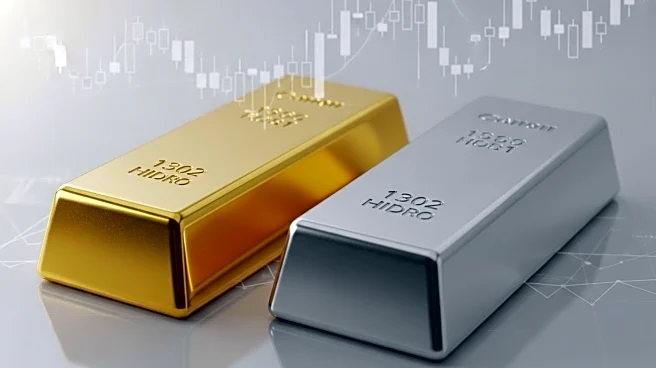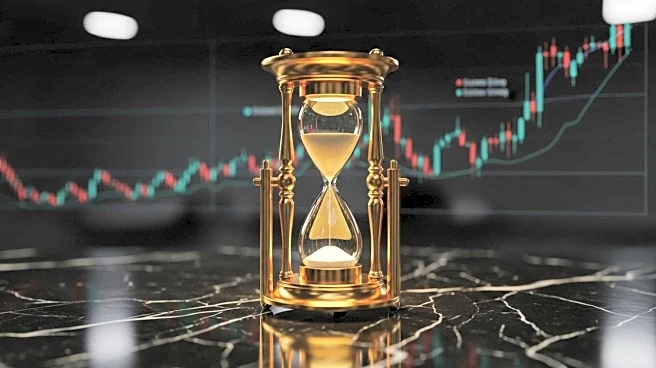What's Happening?
Gold prices have reached an unprecedented $4,000 per ounce, driven by strong investment demand amid geopolitical and economic uncertainties. The increase is supported by central bank purchases, a weaker dollar, and heightened interest from retail investors. The Federal Reserve's anticipated interest rate cuts have further bolstered gold's appeal as a hedge against inflation and market volatility. The current rally marks gold's strongest performance since 1986, with significant gains in the first quarter of the year.
Why It's Important?
The surge in gold prices reflects broader economic concerns, including the impact of geopolitical tensions and the potential for further Federal Reserve rate cuts. As investors seek to protect their portfolios, the demand for gold as a safe-haven asset has intensified. This trend could signal a lack of confidence in traditional financial instruments and the U.S. dollar, potentially affecting global markets and economic stability. The shift in investment patterns may also influence central bank policies and international trade dynamics.
What's Next?
Market analysts anticipate continued volatility, with potential further increases in gold prices if economic uncertainties persist. The Federal Reserve's upcoming meetings and decisions on interest rates will be closely watched, as they could impact investor behavior and market trends. Additionally, geopolitical developments and trade negotiations may further influence gold demand. Investors and policymakers will need to navigate these challenges to maintain economic stability and growth.
Beyond the Headlines
The current gold rally highlights the evolving role of gold in global finance, as investors increasingly view it as a reliable store of value. This shift may prompt a reevaluation of investment strategies and risk management practices. The trend also underscores the interconnectedness of global markets, where economic policies and geopolitical events can have far-reaching implications. As gold continues to gain prominence, its impact on currency markets and international trade could become more pronounced.











